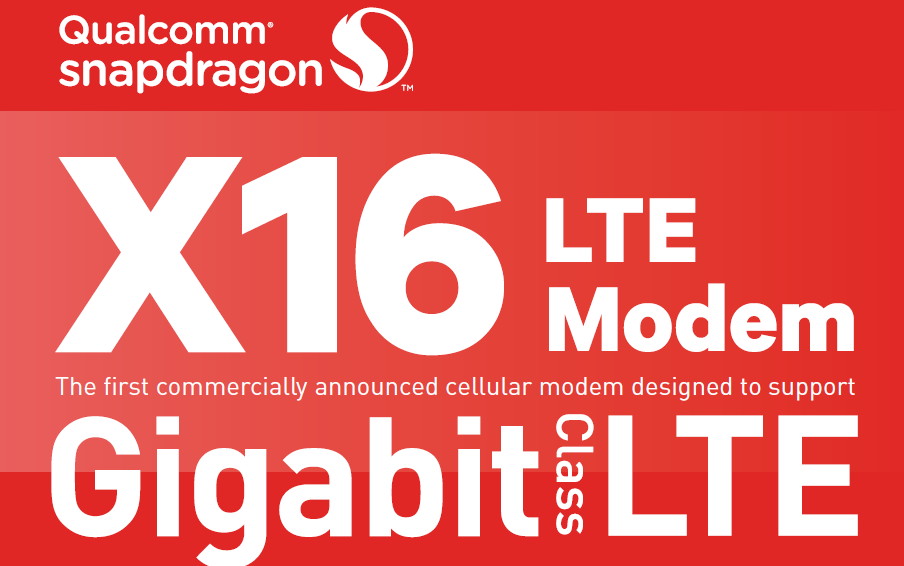Most of us only consider phone speeds in three ways: 3G, the faster 4G, and that frightening time when you get a small ‘E’ at the top of your phone screen...and you have to wait three minutes just to load a single Google Map.
However, there’s so much variation of speed in each of those four categories, with the most exciting advancements happening in the 4G space - if you thought your 4G was fast, wait until you try Gigabit LTE. It’s not just faster, but also better at delivering data when you need it.
But you’re probably tired of hearing so many acronyms around phone connections - most people just want a phone that works more quickly without costing them more money.
Put simply, Gigabit LTE can get you faster speeds without any more effort from you - so let’s break down the technology, so you can see why your next phone should support the new technology from Qualcomm if you want to be at the cutting edge of smartphone connectivity.
Carrier aggregation
There’s a popular analogy when it comes to explaining how faster data speeds work: bigger, faster and wider roads. If every car is a piece of data, the origin is the data’s source and the destination your phone, then you want to get as many vehicles on that road as possible streaming into your handset.
The first thing you’d want to do is have more lanes - after all, a wider road can fit more cars on. At the birth of 4G, carriers bid for spectrum (the radio frequencies that transmit data) and from that, each has their own unique set of frequencies to transmit on.
Most bought multiple bands, so carrier aggregation lets the networks spread the data across a wider spectrum - if each band is a lane of a motorway, then three or four lanes is far better than a single one.
4x4 MIMO
This is a technology that you’re probably already used to: it’s similar to the newer, rapid, wireless routers that are making their way into smartphones.
Simply put, it’s more antennas in your phone - and trust us, that’s no easy thing to do in the ever-slimmer grunt monsters we carry around with us.
But by having 4x4 MIMO (multiple in, multiple out) technology on board, you’ve got four different receivers taking in data in a really efficient way.
To go back to the road analogy: if carrier aggregation widens the motorway, 4x4 MIMO adds layers on top. That’s even more traffic coming your way...
256-QAM

OK - we’ve sorted the size of the roads out, but what about those pesky cars? What if, instead of tiny hatchbacks, we made them trucks instead?
That’s what 256-QAM does - each little piece of signal carriers more data… 33% more in fact, which makes everything so much more efficient.
What does that mean in reality? Every time you ping for a football score, a weather update or the latest social network updates, your phone is getting more dense data and can display the stuff you really want to see faster.
Curious about what 256-QAM stands for? Quadrature Amplitude Modulation, throwing in 8 bits of data compared to the 6 bits in 64-QAM. Bet you’re glad you asked now...
LTE-U
LTE-U is a smart little piece of technology that can - you’ve guessed - help get you faster speeds on the go.
This doesn’t necessarily change the way your phone receives the signal, but uses the Wi-Fi spectrum (making use of Wi-Fi equipment already buzzing with data) to take the load off the cellular networks.
If you’re wondering whether this would be of any use to you, well, just think back to a time when you were trying to use your smartphone in a congested area, like an airport or a shopping centre, and you’ll appreciate the extra space this tech makes for data to your phone.
And for the sake of hygiene: if carrier aggregation makes roads wider, 4x4 MIMO more lanes on top, 256-QAM offers bigger vehicles… LTE-U creates all-new roads, meaning congestion in the virtual city of data is minimised as more cars take to the side streets to get the data to you as quickly as possible.
from TechRadar - All the latest technology news http://www.techradar.com/news/the-secret-technology-behind-gigabit-lte
No comments:
Post a Comment